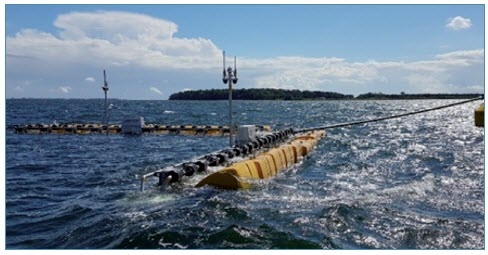DENMARK
OPEN SEA TEST SITES
|
DanWEC is the Danish site in the North Sea for testing Wave Energy Converters. It is located close to Hanstholm Habour as shown on the image below. The water depth is between 15 – 30 meters, and the wave resource about 7 kW/m with max Hs up to 8 meters. The site is marked and equipped with two DataWell buoys measuring wave heights as well as current. |
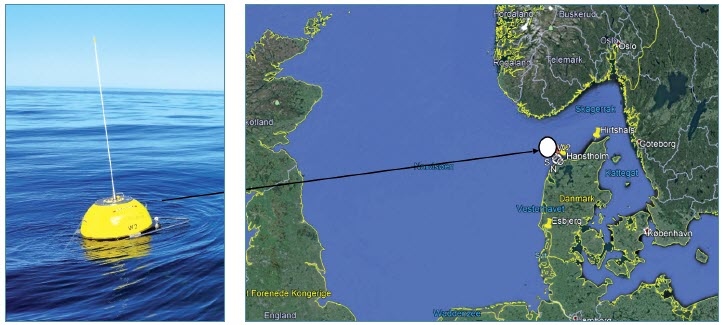 |
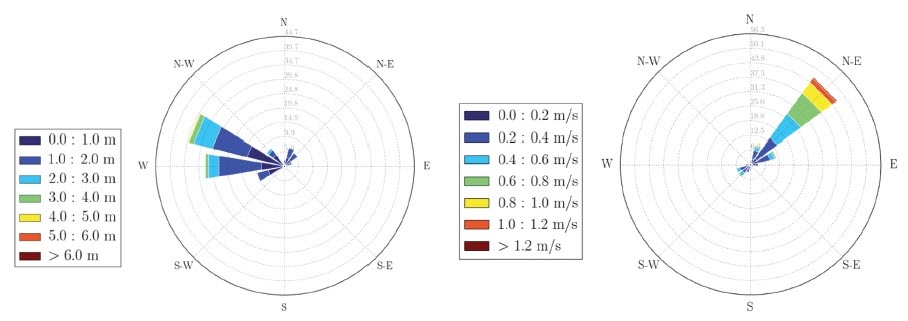
Directional measurements of waves and currents at the DanWEC Hanstholm site
DanWEC plans to establish grid connections in order to facilitate the continued development and testing of WECs and these plans were presented to the Danish Energy Agency in November 2017, in alignment with the strategy of the Partnership for Wave Power in Denmark.
OPERATIONAL PROJECTS
|
Resen Waves provide small scale 300W commercial off the shelf wave energy buoys for providing electric power and real time data communication for instruments in the oceans, as a plug and play solution. The buoys can be installed in water depths up to 200 m as standard and are designed for full ocean exposure. Specials on request for bigger water depth. The technology is characterized by high efficiency, low weight and direct mechanical to electric drive with few moving parts. Later the buoys could be scaled to 250kW to 500kW per buoy. |
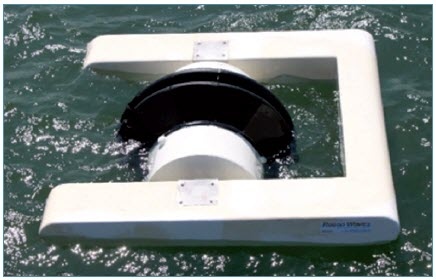 Resen Waves |
|
|
WavePiston has formed a consortium with Vryhof Anchors, Fiellberg and the Technical University of Denmark, and have been testing a ½ scale prototype in the North Sea at the DanWEC test site outside Hanstholm, since 2015. The technology is a surface attenuator using the wave surge to capture the wave energy. The structure is a long steel wire rope with slack mooring in each end. On the steel wire rope many energy collectors are mounted like pearls on a string each converting the wave energy. |
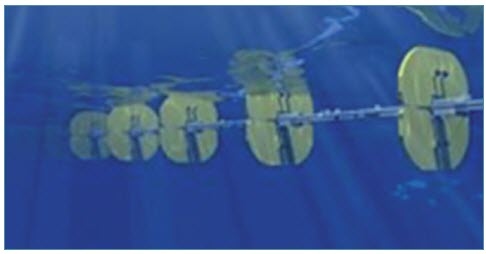 WavePiston |
|
|
WEPTOS was tested in open sea in Lillebælt in 2017. It is a V‐shaped structure that absorbs the wave energy through a line of rotors (Salter Ducks), on each arm - each transmits energy to a generator. This gives a relatively smooth energy generation, suited for known generator solutions. WEPTOS completed test in small scale in AAU 2008, as well as large scale model tests in Spain 2011 and in Edinburg 2014. |
|
PLANNED DEPLOYMENTS
Crestwing has been tested in the hydraulic laboratories in AAU (2008) and DHI (2010). Since 2011 Crestwing has started testing in real sea conditions in scale 1:5 in Frederikshavn. Crestwing is a “hinged raft” composed of two pontoons connected with hinges. The rotation around the hinge activates a power take-off system developed by Crestwing and placed dry in a large engine room with easy access. The plant is not visible from land even in park formation due to the low freeboard of the units. http://crestwing.dk

Crestwing plans to test a larger prototype in 2018
Wave Dragon was tested in Nissum Bredning in 2003 - 09. Wave Dragon is a floating device equipped with several hydro turbines. The installed power range is 1.5 to 12 MW. Wave Dragon has recently performed feasibility studies for combined wave energy and seaweed production plants at more deployment sites than the original study for the Irish Sea, https://maribe.eu, multi-purpose WD platforms equipped with environmental monitoring systems and combined WD wave-wind platforms with possible double yearly power production at deployment sites with good wind resources, leading to substantial lower cost of energy. www.wavedragon.net
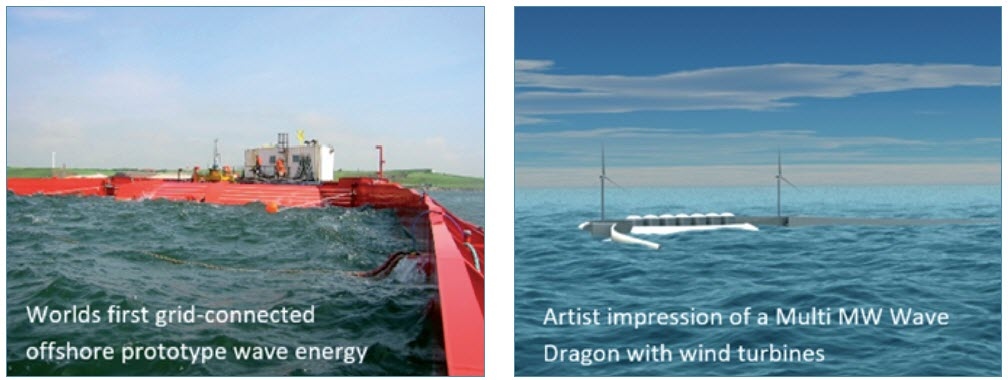
Wave Dragon is investigating tests in Wales in the UK
The Exowave WEC element, also known as oscillating wave surge converter, extracts the kinetic energy available in the wave induced orbital water particles motion through a bottom-hinged flap. The device is intended to be installed in waters up to 40 meters depth, allowing for boats to sail above the converter itself and ensuring zero visual impact. http://exowave.com
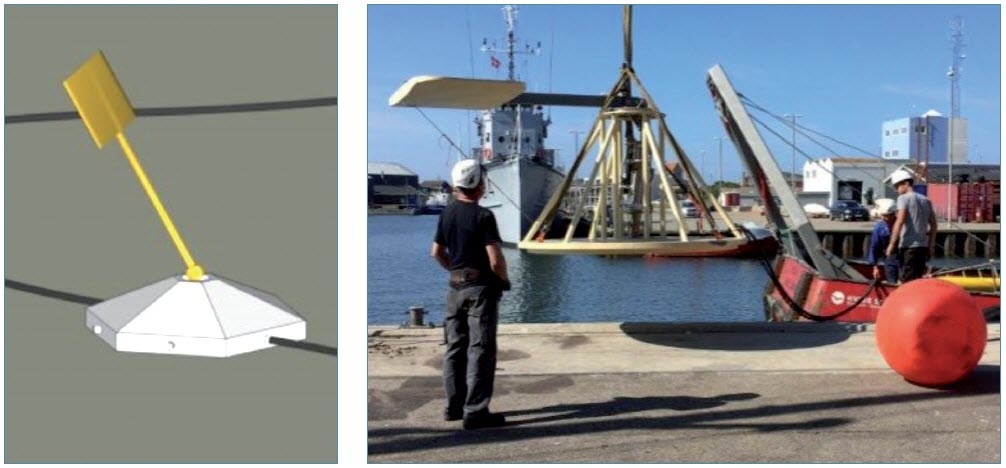
Exowave is planning on continued testing in 2018

